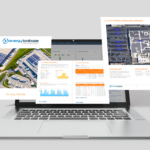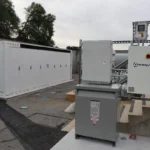When modeling a solar or storage project, one important aspect to consider is the possibility of a rate switch. By not performing a rate switch to a more solar or storage-friendly rate schedule after installation, you could be leaving potential savings on the table. On the other hand, sometimes a rate switch could negatively impact the prospects of a project. That’s why it’s important to consider every possibility when it comes to rate switches for your projects. In this blog, we’ll cover what a rate switch is, when it can be done, the benefits, and how easy it is to model rate switches using ETB Developer.
What is Rate Switching?
Rate switching involves changing from one electricity rate plan to another, often to maximize the financial benefits of solar energy production or energy storage. Many utilities offer different rate structures and switching to the right one can lead to significant savings on your electricity bill. Utility companies offer various rate structures, including:
- Flat Rate Plans – A single, consistent price per kilowatt-hour (kWh), regardless of the time of use.
- Time-of-Use (TOU) Plans – Prices vary based on the time of day, with higher rates during peak hours (e.g., late afternoon and evening) and lower rates during off-peak hours (e.g., nighttime or midday).
- Tiered Rate Plans – Pricing increases as energy usage exceeds certain thresholds.
- Demand Charge Plans – Commercial and some residential customers pay extra fees based on their highest level of energy use in a billing period.
For solar and storage customers, TOU plans are often the most beneficial, as they allow you to use or store solar-generated energy when rates are low and sell excess electricity back to the grid when rates are high.
When is a Rate Switch Possible?
The option to switch rates depends on the utility. Which rate schedule a customer is on depends on several factors including their energy usage patterns, location, type of customer (residential or commercial), and whether they have solar panels or battery storage. Every utility should have a tariff sheet that describes the applicability of each rate schedule. Details about possible rate switches, or information about who qualifies for a certain rate schedule, can be found in the applicability section.

Rate switches can also be mandatory or voluntary. For example, the California investor-owned utilities require customers who install solar to switch to a TOU rate plan. Some other utilities allow customers to freely switch to a different rate schedule if they wish (so long as they meet the applicability requirements).
The Benefits of Rate Switching for Solar and Storage Customers
A successful rate switch can have several benefits. Switching to a more advantageous rate schedule for your particular scenario can maximize savings and significantly lower your electricity bills. Rate switching to a more solar or storage-friendly rate schedule (i.e., a TOU plan) allows you to store solar energy during low-rate hours and discharge it during high-rate hours, reducing your reliance on high-priced electricity. (A caveat to this is that the end customer must be aware of the change to their new rate structure and how the TOU pricing works. They could potentially pay more if the bulk of their energy consumption falls in higher-priced hours.) Lastly, a well-matched rate plan can help you recoup the cost of your solar investment faster by increasing the overall value of the energy your system generates.
How ETB Developer Simplifies Rate Switching
ETB Developer makes it extremely easy to model a rate switch. With the press of one button, ETB Developer takes out all the guesswork for our users by providing clear and concise details for both pre- and post-rate switch, so you know exactly which rate setup gives the greatest savings for the project you’re working on. A big reason we’re able to do this is thanks to our in-house utility rates team that manages and updates our database of over 100,000 rate schedules, providing our users with the most accurate rate information possible.
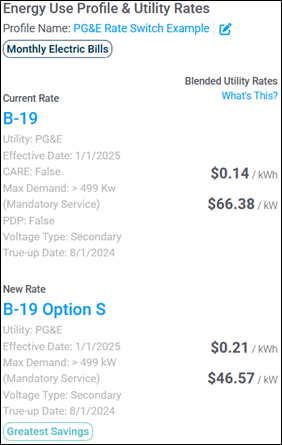
Our users can also use the Power Rating Optimizer feature that calculates and visualizes the dollar savings of a project, based on the user’s specified proposal inputs, for ten different sized systems. This feature allows the user to quickly run advanced simulations to determine the optimal system size of their project, and it includes pre- and post-rate switch simulations too. This means that users can see up to 20 different PV and storage simulations as well as the impact that a rate switch will have on the sizing of the project.
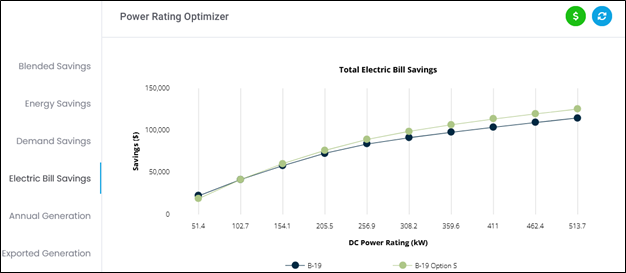
ETB Developer also seamlessly integrates with our ETB Monitor product which provides real-time operational performance and savings insights for your PV and storage systems. The Utility Bill section in Monitor provides a high-level breakdown of your electricity bill. You can observe the total savings for the billing period, the current rate tariff of the site, the rate tariff that would have applied if the renewable energy project hadn’t been commissioned, along with a high-level breakdown of the savings from solar, battery, and rate switch, as well as the remaining bill amount to be paid.
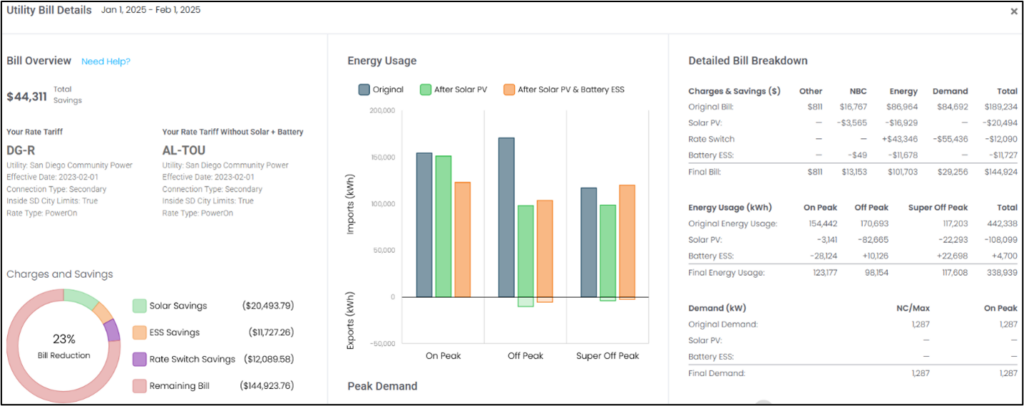
Rate switching can be a game-changer for solar and storage customers looking to maximize their return on investment, and with ETB Developer, it’s never been easier to model accurate rate switches for your solar and storage projects. Sign up for a 14-day free trial for ETB Developer to start modeling successful projects today!


